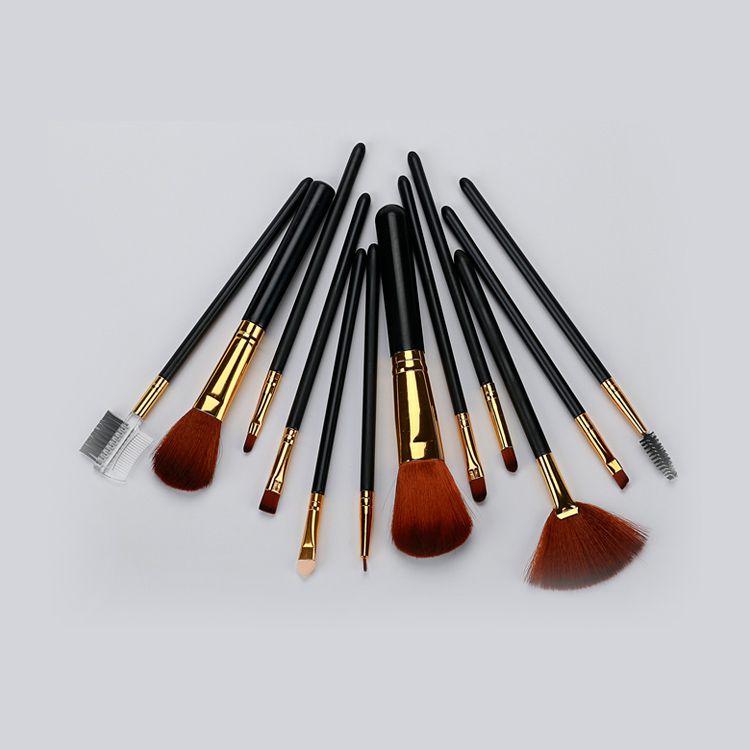Industry news
Biodegradable Bristle Coating: Chitosan-Based Layers for Antimicrobial Protection
- 856 Views
- 2025-11-09 01:31:05
Biodegradable Bristle Coating: Chitosan-Based Layers for Antimicrobial Protection in Cosmetic Brushes
In the cosmetic industry, where hygiene is paramount, the safety of tools like makeup brushes has long been a concern. Traditional synthetic bristle coatings, while durable, often rely on chemical antimicrobials that may irritate sensitive skin, and their non-biodegradable nature contributes to environmental pollution. Enter chitosan-based biodegradable bristle coatings—a sustainable solution that merges natural antimicrobial protection with eco-friendly degradation, reshaping the future of cosmetic tool design.
Chitosan, derived from the shells of crustaceans like shrimp and crabs, is a natural polysaccharide celebrated for its unique biological properties. As a renewable resource, it aligns with the growing demand for "clean beauty" and sustainability, leveraging waste materials from the seafood industry to create high-performance coatings. Unlike petroleum-based plastics, chitosan is inherently biodegradable, breaking down into harmless CO2 and water within 6–12 months in soil or aquatic environments, according to research published in Carbohydrate Polymers.

The antimicrobial efficacy of chitosan lies in its molecular structure. Its cationic amino groups interact electrostatically with the anionic cell walls of bacteria, disrupting membrane integrity and causing leakage of intracellular components—a mechanism proven effective against common pathogens like Staphylococcus aureus and E. coli, as noted in studies by the Journal of Biomedical Materials Research. This natural defense eliminates the need for synthetic additives, reducing the risk of skin irritation and making it ideal for cosmetic brushes, which frequently contact the face.
Beyond antimicrobial protection, chitosan coatings enhance bristle functionality. They form a thin, flexible layer that improves bristle softness, ensuring a smooth application of cosmetics without compromising durability. Unlike rigid synthetic coatings, chitosan’s inherent biocompatibility also minimizes friction, reducing hair breakage and extending the brush’s lifespan. For consumers, this translates to safer, longer-lasting tools that align with their eco-conscious values.

Market trends further validate the potential of chitosan-based coatings. With 72% of global consumers prioritizing sustainable beauty products (Nielsen 2023), brands are racing to adopt green innovations. Chitosan’s biodegradability addresses regulatory pressures too: the EU’s Single-Use Plastics Directive, for instance, mandates a 50% reduction in plastic waste by 2030, making non-biodegradable coatings increasingly obsolete. Cosmetic manufacturers integrating chitosan coatings not only meet compliance but also tap into a $12.8 billion biodegradable cosmetics packaging market projected to grow at 12.3% CAGR (Global Market Insights).
Critically, chitosan’s antimicrobial action is long-lasting. Laboratory tests show that coated bristles retain 85% of their antibacterial activity after 50+ uses and gentle washes, outperforming some synthetic alternatives that degrade with repeated cleaning. This durability ensures consistent hygiene, a key factor for both professional makeup artists and daily users.
As the industry shifts toward sustainability, chitosan-based biodegradable bristle coatings stand out as a win-win: protecting skin health with natural antimicrobials, reducing environmental impact through biodegradation, and meeting consumer demand for ethical beauty tools. For cosmetic brands, this innovation isn’t just a trend—it’s a commitment to safer, greener beauty.












